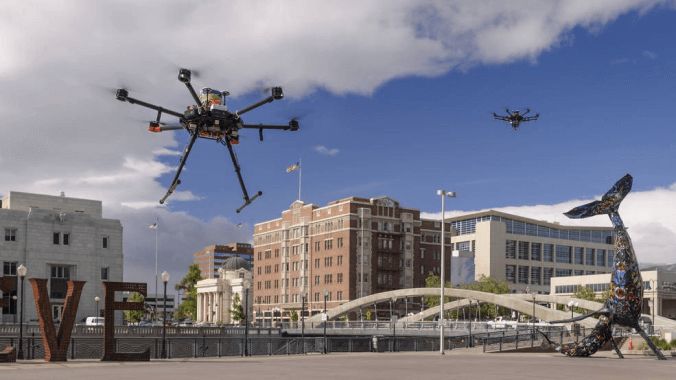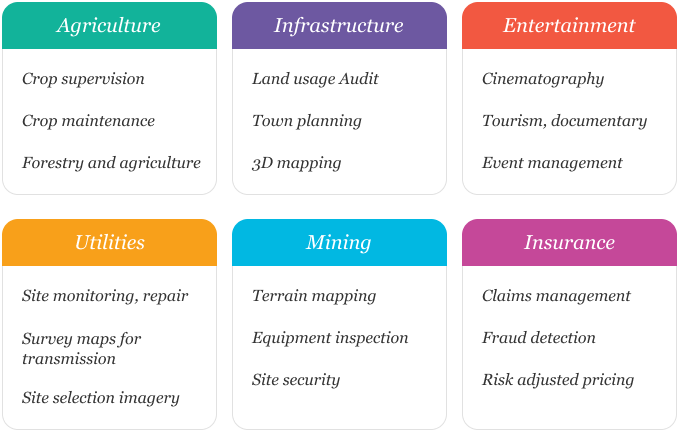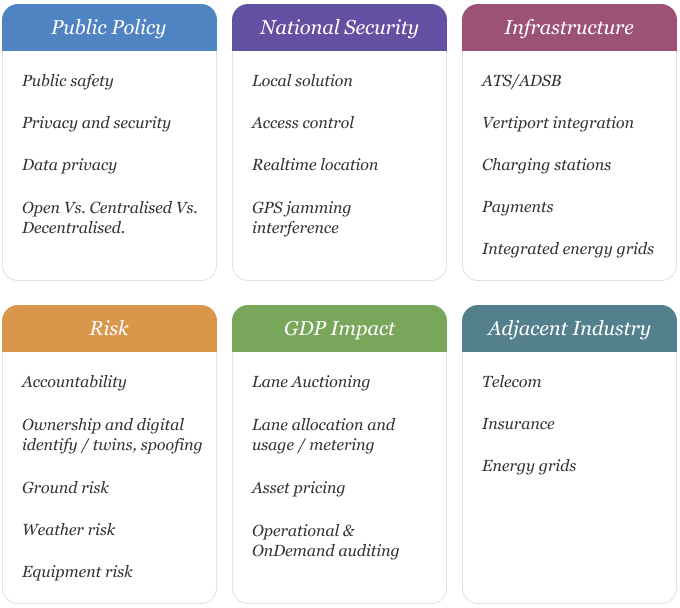The Next Big Thing Post COVID-19! Creating a Drone Economy in India

The post-COVID-19 world gives us an unprecedented opportunity for reimagining economies, as well as the technologies that will power growth. In India, the possibilities for “new economy” activities and employment based on drones are significant. Regulations regarding airspace management, strategic choices, technologies adopted and investments can aid the market to grow rapidly.
Today, India is one of the top countries among the drone importing nations . While the value of drone imports are driven by military imports, with the new regulatory policy in place, India is seeing a hockey stick growth in commercial (B2B, B2G, B2C) & recreational applications driven end-use drones. A study by BIS Research predicts that the global target drone market is estimated to reach $10,433.9 million in 2031, at a compound annual growth rate (CAGR) of 8.77% during the forecast period 2021-2031.

To support the growth of drone-based services, the Director-General of Civil Aviation (DGCA) first unveiled draft norms for the usage of Remotely Piloted Aircraft Systems (RPAS) in October 2017, which came into effect in December 2018. After August 2021, several rules and regulations have been changed and relaxed to make flying more convenient in India, mentioned below are a few important features.
For any emerging technology, awareness drives engagement, which subsequently drives adoption. At this point, bringing regulatory certainty is the most important factor that will drive growth. For the long-term predictable growth, however, regulatory certainty is not the only factor that drives growth: we must consider the situation in its entirety and then carefully define the roadmap at a tactical level.
Considering requirements for talents to keep with the over 600 thousands drones in the sky already, India will need at least a million pilots by 2025 to support the demand for drone flights. Establishing a training and certification infrastructure is an urgent need. Leveraging India’s already established engineering education infrastructure and bringing them under central certification authority will ensure quality and also safeguard that India as a nation meets the demand of the future.
Application of the drone technologies will evolve rapidly throughout the next decade, might include use cases that we may not have even considered. Proactive orchestration, fit for purpose processes and making it “first time right” mindset will ensure drone technologies can deliver at its fullest potential.
“UTM” stands for “Unmanned Aircraft System (UAS) Traffic Management”. It’s an issue that is critically important to the drone industry. The urban population of India has seen a rise from 17.1% to 29.2% and number of people in India’s cities will overtake the rural population in the next three decades. Current land infrastructure is already exhausted and that automatically makes Aerial infrastructure the next best alternative. Population density / square kilometer makes it a mandate that we take a broad enough view to design a system that can serve 1.5B people. Without a foolproof system that ensures all stakeholders that manned aircraft and unmanned aircraft will be able to share the skies safely, proper “drone integration” into the airspace will not take place.
Regulatory impact is currently one of the most important factors affecting the pace of adoption of drone-powered solutions by business and government entities. Drone regulations have changed in recent years from being treated as a niche hobby to becoming part of regular aviation operations, to a point where national authorities have started developing special regulatory frameworks to address the most urgent issues. The following guiding principles are critical for future success:
For the next couple of years, RPA/UAV deployments are expected to be limited within “Visual line of sight” use cases (Infrastructure maintenance, Survey and Mapping, Agriculture, Media, mining etc) driven by start-up ecosystem and drone service companies.
In India, the six areas where we expect drones to be used are Agriculture, Entertainment, Utilities, Mining and Insurance. While most visible usage of drones today is in wedding photography and videos, we expect agriculture, infrastructure and insurance to grow rapidly in the near future.

The economic cost of traffic congestion in India surpasses Rs. 60,000 crores per year, which makes Low Altitude Aerial and Urban Mobility as a natural choice. Uber has identified India as one of its air taxi test markets.
Recently, several entities like the Dunzo Air Consortium, Blue Dart Med Consortium and a few others have got the nod from the Indian government to commence trials for BVLOS operations. Joining the bandwagon, after receiving the required permissions for trials, from the Ministry of Defence (MoD) and the Directorate General of Aviation (DGCA), food-delivery giant, Swiggy has collaborated with ANRA Technologies for delivering food using drones.
Getting back to the race, subsequently being badly affected by the pandemic, SpiceJet announces the launch of SpiceXpress drone services for delivering medical and essential supplies to remote areas. The airline has partnered with Throttle Aerospace for more than 50 customised drones and has already completed all the formalities with the DGCA. Additionally, SpiceXpress has signed an MoU with NewSpace Research and Technologies Pvt. Ltd. to develop a new line of drone delivery service to expand its logistics platform.
BVLOS operations will fuel unprecedented innovations in the aerial mobility space primarily because there is no/limited entry barrier to enter drones as a service business especially in the micro, small and medium segment.
Following are the “arrowheads” that need deep experimentation and multi-layer advocacy, so that as a country, we make strategic choices and investments towards a homegrown UTM specific to India which can be integrated safely, efficiently into the national airspace.

It’s important to take a step back and re-visualise how the future of sky will look like in the next 10 years and make strategic investments towards a homegrown UTM specific to India which can be integrated safely, efficiently into the national airspace. Low altitude aerial operation is sensitive and vulnerable to hyperlocal environment change. Designing a robust UTM system that can support BVLOS operations at scale needs active and joint participation from Government, Industry and Academic Partners.
